The review was kindly provided by RifleShooter Magazine
Author - Paul Austin
|

The all new Pulsar Pro series sets a new benchmark for thermal - Credit: Archant
|
Paul Austin reviews the latest cutting edge thermal upgrades with the Pulsar Accolade 2 LRF XP50 Pro & Pulsar Helion 2 XP50 Pro
|

Pulsar Helion 2 XP50 Pro, military grade build quality combined with excellent ergonomics.
Credit: Archant
|
It wasn’t that long ago that we had to wait 18 months for a major hardware upgrade from Pulsar, but times have changed. It was only a few months ago that I was reviewing the Accolade 2 and Helion 2 spotters, and yet here we are with the all-new Pro series of both devices.
Pulsar had a clear choice, either discount or innovate. Well, they have definitely chosen the latter and are now basing their business model on the such pricing structure, where if you want the best, be prepared to pay for it. The question is, are the new flagship products in the Pulsar range really worth all that extra cash?
Before discussing the toe-curling, eye-popping and indeed jaw-dropping price tag of the Pulsars, let’s look at the basic elements that make Pulsar confident you will indeed take a hammer to your piggy bank for their take on the ultimate thermal.
|

Pulsar Accolade 2 LRF XP50 Pro, the same imaging quality of the Helion but with the added bonus of LRF
Credit: Archant
|
Design & build
With Pulsar, you get the best and toughest build quality, the best materials plus superior ergonomics and functionality, it’s that simple. In my opinion, you also get the best user interface, navigation, wifi connectivity and app, along with the most comprehensive image controls. Their short click, long click selection system have been many times copied.
In the field, gloved or otherwise, there’s no problem finding and manipulating the controls either day or night. Fingers fall intuitively on buttons and functions, and the whole experience is iPhone-esque in terms of ergonomics and design.
The base mag is 2.5x on both models, stretching out to a rather hopeful 20x. If I could change anything I would probably opt for 2x to 16x, but that’s a personal preference – I tend to shoot at fairly close-quarters on smaller woodland permissions with typical ranges between 50m to 200m. If I regularly shot over 200-acre fields, I’m sure the current base mag wouldn’t bother me.
Another point worth noting is the AMOLED display size of 640x480. This might seem a bit low-res in a world of ‘HD’ this and ‘4K’ that, but that’s all upscaling, basically blowing up the core 640 image from the sensor to fit a larger display. It actually does nothing for the image quality whatsoever, so don’t be put off.
|

The Accolade is a pretty chucky unit but once you've seen the image the size and weight doesn't matter
Credit: Archant
|
Image quality
Now we’re getting to the crunch. Does the image quality warrant all that cash? If you can afford/justify the investment then yes, definitely, all day long. The new Pulsar V2 Pros with the <25 mK NETD upgrade are frankly stunning.
Every time I fire up either of these devices I think, wow, that’s impressive. It doesn’t matter if it’s a thermal-friendly day or one of those wet drizzly, foggy mornings that just kill the contrast, they’re just a joy to use. In great conditions, they’re amazing; on poor days, they’re still impressive!
|

As with all the Pulsar's the button layout and controls are excellent
Credit: Archant
|
The NETD difference
NETD figures have become the battleground for thermal marketing. <50 mK was the norm, then Pulsar upped the game with <40 mK with their recent V2 releases, and now Pulsar have knocked them back over the net with the <25 mk in the new V2 Pros.
I’m going out on a limb here, but I honestly can’t see a better image coming out of a 640 sensor than that which Pulsar have managed to coax out of these new Pro models. The only thing I can see that could push the technology further would be a new larger sensor size, 1280x960 maybe? I think that’s a very long way off and I haven’t heard a single industry rumour to make me think otherwise.
The higher dynamic range provided by a lower NETD figure really comes into its own in a flat thermal landscape. Those cold wet mornings, raining, foggy and damp days is where a lower NETD makes a difference.
Larger sensors are a huge benefit, as they have more pixels to play and can therefore resolve better, something which is further enhanced by a larger 50 mm lens. The <25 mK figure means extremely subtle differences in temperature are translated into the image much more precisely and that’s the primary advantage.
However, the <25 mK of these Pro models adds another dimension in more ways than one. The image itself feels much more three-dimensional in all conditions – there’s more depth, detail and contrast to the image across the board. They’re not simply functional, the image itself is a joy to look at with so much more detail now coming to the fore.
|

The lower NETD in action with real definition between the body and head of geese in hiding at 100 m
Credit: Archant
|
Accolade LRF
My final pat on the back goes to the Accolade LRFs. Most onboard laser rangefinders in the thermal market can’t hold a candle to a dedicated unit but the Accolade’s is the exception. It’s good for the claimed 1,000 m and more importantly it’s fast and reliable, pinging the target accurately consistantly at any range.
|

Even on a very poor thermal evening image quality is very acceptable
Credit: Archant
|
And finally...
There’s nothing not to like about the new Pulsar Pros. The battery life is exceptional, the performance, image quality and features are unmatched. The only downside is the asking price. Buyers’ remorse isn’t going to be an issue, until the other half discovers how much you’ve spent! If you can afford one, I’m very envious!
|

You could be fooled into thinking this was a standard black & white photo - but it's 100%l thermal
Credit: Archant
|
Pulsar Helion 2 XP50 Pro & Pulsar Accolade 2 LRF XP50 Pro
|
f50/1.2 Lens (Accolade 2 LRF XP50 Pro)
|
|
f50/1.0 Lens (Helion 2 XP50 Pro)
|
|
640x480 Thermal Core
|
|
25 mK Sensor
|
|
2.5-20x Magnification
|
|
17 micron Pixel Pitch
|
|
1800 m Detection Range (Man Sized)
|
|
Three Observation Modes - City, Forest, Identification
|
|
Built-in Wi-Fi Module
|
|
Stream Vision Compatible
|
|
Integrated Video/Photo Recording
|
|
50 Hz Refresh Rate
|
|
8 Selectable Colour Palettes
|
|
Frost resistant 640x480 AMOLED Display (Accolade 2 LRF XP50 Pro)
|
|
Frost resistant 1024x768 AMOLED Display (Helion 2 XP50 Pro)
|
|
IPX7 Rated
|
|
Minimum Focus Range – 3 m
|
|
Operating Temperatures (-25°C to +50°C)
|
|
Weight 0.627kg
|
|
Quick-change Long-life Rechargeable Battery Packs
|
|

Depth of field is impressive. The pickup is 40m away, the far tree line in 530 m
Credit: Archant
|
Pulsar Accolade 2 LRF XP50 Pro
As above plus:
|
Binocular design
|
|
Variable interpupillary distance
|
|
Built-in 1000m Laser Rangefinder
|
|
Weight 0.790kg
|
|

You don't get anything like this level of detailat distance but you can clearly see the impact of a low NETD in this close up
Credit: Archant
|
 Thermion 2 LRF XL50
Thermal Imaging Riflescope
Thermion 2 LRF XL50
Thermal Imaging Riflescope
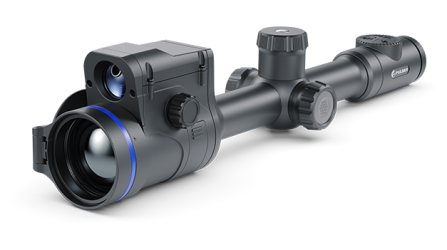 Thermion 2 LRF
Thermal Imaging Riflescopes
Thermion 2 LRF
Thermal Imaging Riflescopes
 Talion
Thermal Imaging Riflescopes
Talion
Thermal Imaging Riflescopes
 Thermion 2
Thermal Imaging Riflescopes
Thermion 2
Thermal Imaging Riflescopes
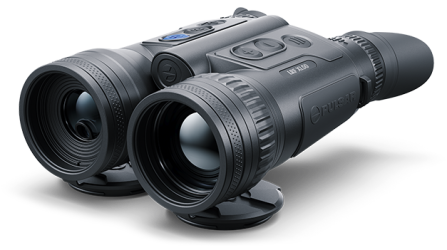 Merger LRF XL50
Thermal Imaging Binoculars
Merger LRF XL50
Thermal Imaging Binoculars
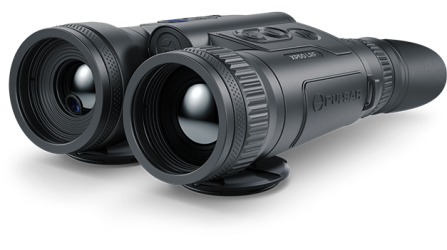 Merger LRF XP50
Thermal Imaging Binoculars
New
Merger LRF XP50
Thermal Imaging Binoculars
New Merger LRF XP35
Thermal Imaging Binoculars
Merger LRF XP35
Thermal Imaging Binoculars
 Merger LRF XQ35
Thermal Imaging Binoculars
New
Merger LRF XQ35
Thermal Imaging Binoculars
New Telos
Thermal Imaging Monoculars
Telos
Thermal Imaging Monoculars
 Axion 2 LRF
Thermal Imaging Monoculars
Axion 2 LRF
Thermal Imaging Monoculars
 Axion 2
Thermal Imaging Monoculars
New
Axion 2
Thermal Imaging Monoculars
New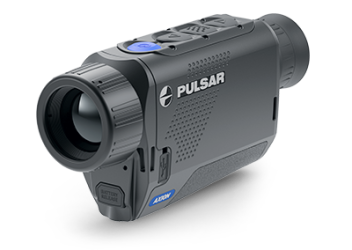 Axion XQ30 PRO
Thermal Imaging Monoculars
Axion XQ30 PRO
Thermal Imaging Monoculars
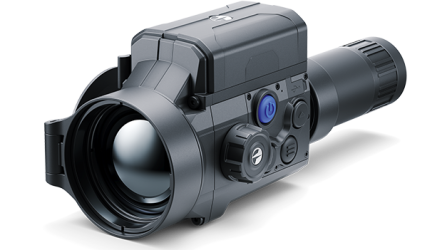 Krypton 2
Thermal Imaging Monocular
Krypton 2
Thermal Imaging Monocular
 Axion XM30F
Thermal Imaging Monoculars
Axion XM30F
Thermal Imaging Monoculars
 Pulsar Digex-XS
External Infrared Illuminators
Pulsar Digex-XS
External Infrared Illuminators
 APS Batteries
Battery Packs
APS Batteries
Battery Packs
 APS Chargers
Battery Chargers
APS Chargers
Battery Chargers
 IPS Batteries
Battery Packs
IPS Batteries
Battery Packs
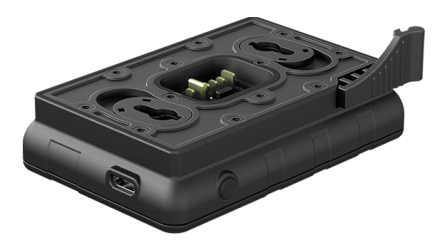 IPS Battery Charger
Battery Charger
IPS Battery Charger
Battery Charger
 Rifle Mounts
for Pulsar Riflescopes
Rifle Mounts
for Pulsar Riflescopes
 H7 Spacers
Repair Kits
New
H7 Spacers
Repair Kits
New PSP-V Weaver Rail Adapter
Adapter
PSP-V Weaver Rail Adapter
Adapter
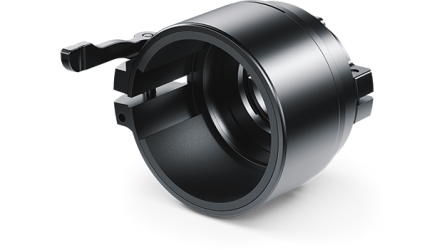 PSP Ring Adapters
Adapters
New
PSP Ring Adapters
Adapters
New PSP-B Ring Adapters
Ring Adapters
PSP-B Ring Adapters
Ring Adapters
 FN Adapters
Cover Ring Adapters
FN Adapters
Cover Ring Adapters
 Remote Controls
for digital devices and thermal imagers
Remote Controls
for digital devices and thermal imagers
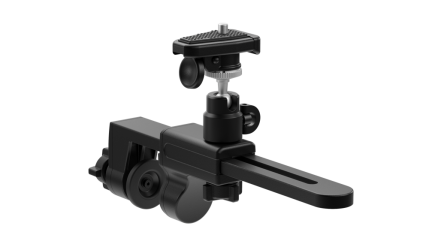 C-Clamp Mount
Pulsar Accessories
C-Clamp Mount
Pulsar Accessories
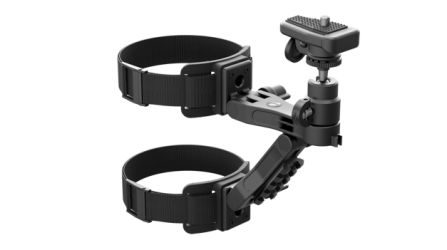 Tree mount
Pulsar Accessories
Tree mount
Pulsar Accessories
 Window Frame Mount
Pulsar Accessories
Window Frame Mount
Pulsar Accessories
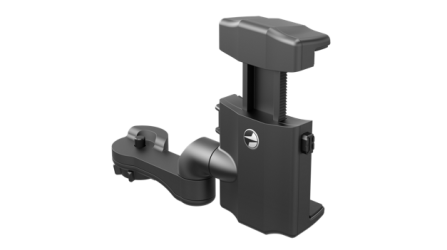 Helion Flip-Up Phone Mount
Pulsar Accessories
Helion Flip-Up Phone Mount
Pulsar Accessories
 Flat Glass Mount
Pulsar Accessories
Flat Glass Mount
Pulsar Accessories
 Neck Straps
Accessories
New
Neck Straps
Accessories
New Monocular Pulsar 3x20 B
Accessories
Monocular Pulsar 3x20 B
Accessories
 Thermal Zeroing Targets
Accessories
Thermal Zeroing Targets
Accessories
 Telos LRF Tripod Adapter
Pulsar Accessories
Telos LRF Tripod Adapter
Pulsar Accessories









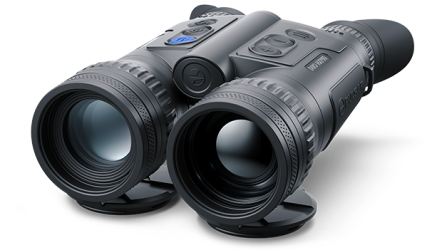



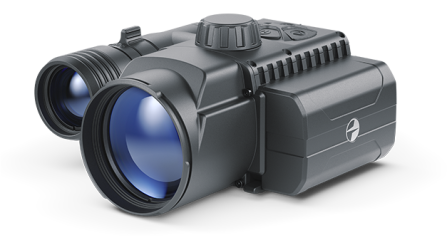




 English
English German
German French
French Spanish
Spanish Italiano
Italiano English
English Lietuvių
Lietuvių









